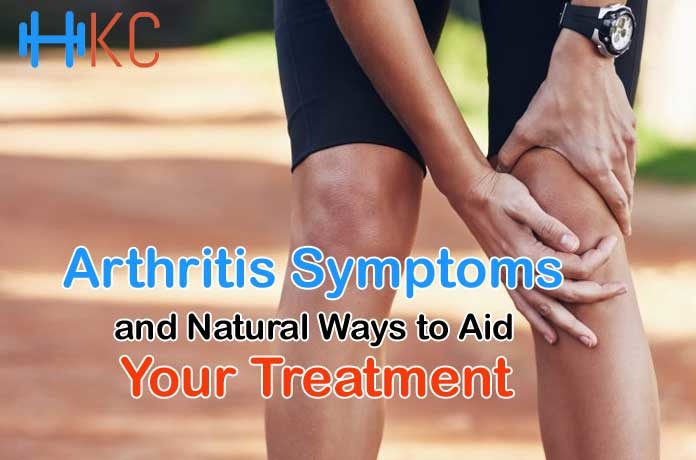Arthritis Symptoms and Natural Ways to Aid Your Treatment
If you haven’t heard it yet, rheumatoid arthritis is on the move, rapidly becoming the plague of the 21st century. It wasn’t that long ago when the entire planet had learnt the terrifying news: nobody’s insured against this chronic condition, not even children.
Since arthritis is an autoimmune disease it comes in all shapes and colors and never acts completely the same. It causes our immune system to behave unpredictably confusing doctors with its myriad of different symptoms.
Sometimes it’s hard to spot it early on and start treatment in a timely manner. And this, in turn, significantly reduces the chances for long-term remission in this disease. That’s why it’s important to listen closely to the body and look out for the red flags.
What is rheumatoid arthritis?
The disease is the result of a faulty immune system that, instead of helping and protecting, starts to bring down its very own defense system. For no apparent reason, it lashes out at healthy cells and tissues causing pain, stiffness and sometimes swelling in the joints. Body parts that are most commonly affected are the hands, feet and wrists.
Arthritis may come and go as it pleases. At times the symptoms – or flare-ups – may subside and then reappear with renewed vigor. When this condition acts up, the person suffering from it may find it difficult and painful to move around the house, take a shower, or even eat. Arthritis, or joint inflammation, significantly limits a person’s normal range of movement.
Symptoms to watch out for
Early signs of arthritis can be dismissed by doctors as something trivial and nothing to worry about. And they might be right. However, if you see that the symptoms are there to stay, strive to address the root cause of the problem. Even if you need to change your healthcare provider to do so.
The main symptoms of rheumatoid arthritis are listed below:
1. Joint pain
It’s been said earlier that this chronic disease mainly affects the joints. Typically, it’s a throbbing pain that targets any joint in the body. However, more often than not it starts with the smaller joints in the hands and feet.
2. Swelling and warmth
Some people get the sensation that their joints are on fire when they touch them. Usually this warmth goes hand in hand with swelling and redness of the inflamed joints.
3. Stiffness
It’s considered to be a classical red flag pointing towards arthritis. While joint stiffness is common, if it lasts for over an hour, it’s a good reason to tell your health professional about it.
4. Chronic fatigue
Fatigue often results from the ongoing chronic inflammatory processes, and arthritis is no exception.
5. Hot flashes
It’s one of the key signs of an autoimmune disease along with night sweats and fever that lasts longer than usual.
6. Weight loss
This condition can mess with your weight. Out-of-control arthritis often results in unexplained weight loss.
*If you have any of these symptoms but they have been proved not related to arthritis, ask your health care provider to run additional tests, as these signs may be linked to other autoimmune conditions.
Traditional treatment
There is no known cure for arthritis. But there are ways to reduce its symptoms and lead a more fulfilling life. Medical treatment should not be neglected, and it should be started as soon as possible. Timing is everything: the sooner the therapy starts the higher is the chance that arthritis will go into remission. The treatment should be individually prescribed, since different therapies work differently for different people. Sometimes the right therapy is selected through trial and error, but only to find the option that works best for a single individual.
Ways to relieve arthritis pain naturally
It always pays to adopt healthier lifestyle habits to contribute to the battle against arthritis flare-ups. There are ways that can help you manage arthritis naturally:
1. Add anti-inflammatory foods to your diet
Many foods and herbs help fight inflammation in the joints and soothe the pain it entails. Among them are: turmeric, fatty fish, broccoli, Brussel sprouts, tofu, Olive oil, cherries, Greek yogurt, citrus, whole grains. This is just a short list. One of the easiest ways to benefit from the healing power of foods is to blend them together. To create your own mix try these smoothie recipes for arthritis pain relief.
You can also try taking herbal supplements, such as bromelain, boswellia, curcumin, ginkgo, or devil’s claw. But always talk to your doctor first before trying these.
2. Get more physical exercise
While it may look as though physical activity causes more pain to people suffering from arthritis, research shows that exercise is deemed one of the most effective non-drug therapies for pain relief and for increasing strength and flexibility of the joints. No need to work out to the point of exhaustion or run a marathon. Some moderate exercises like swimming or walking will do just fine. Make sure to always follow the medical advice of your doctor or physical therapist.
3. Try alternative therapies
Acupuncture as well as massage can effectively complement traditional treatment and help manage pain. Both have proven to help dial down the ache and stiffness of joint muscles which get worse during flare-ups. Anything that may help relieve arthritis pain is worth trying.
















